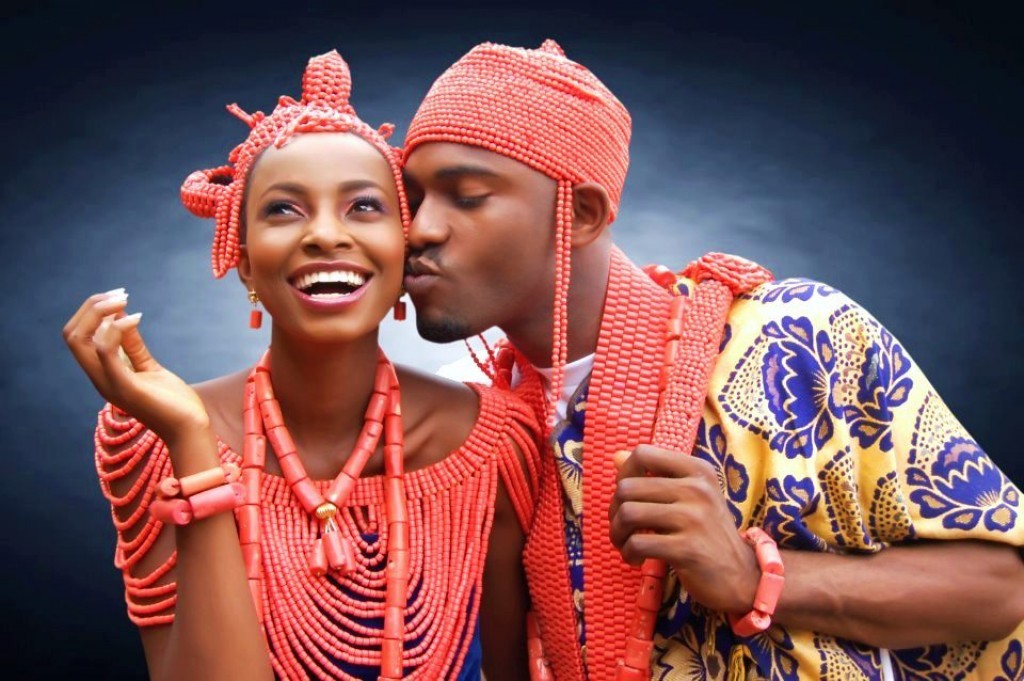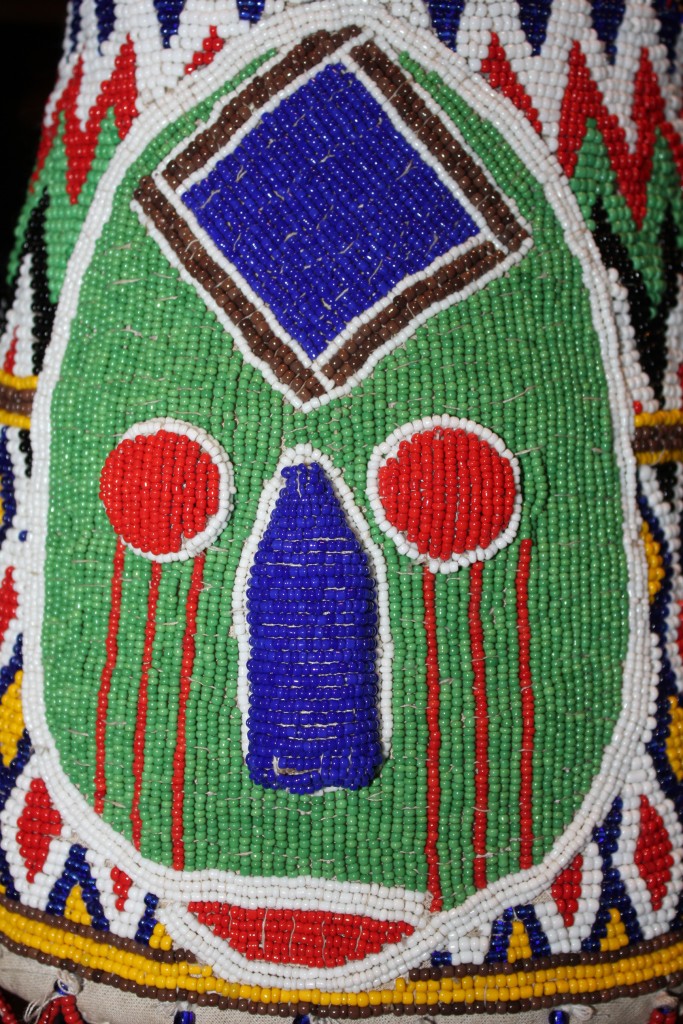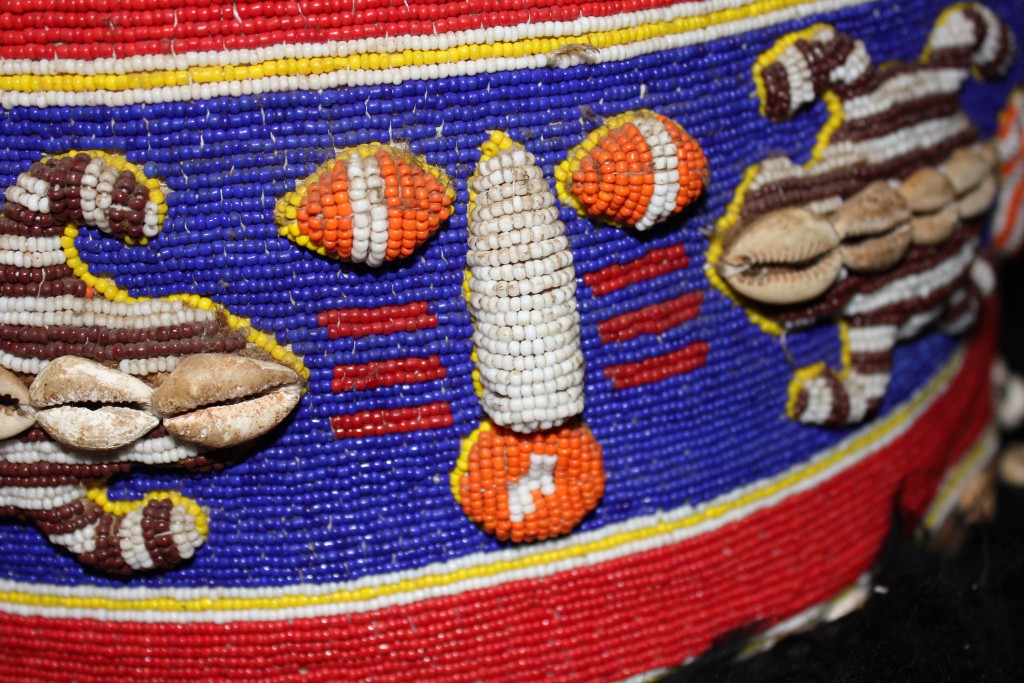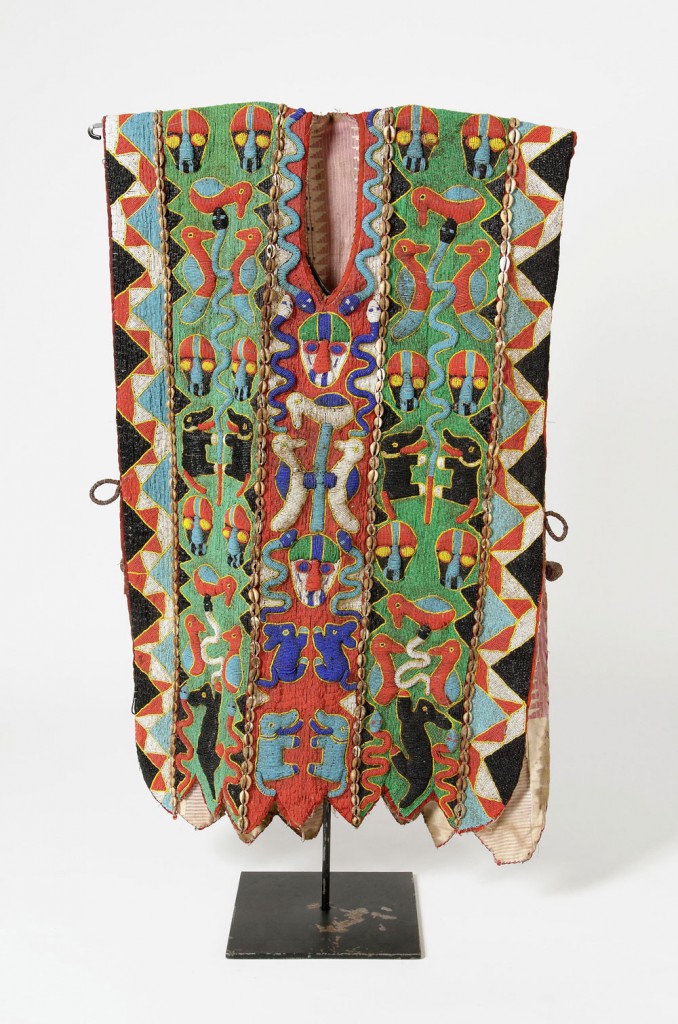Ife in south-western Nigeria was a city-state that became wealthy through trade with forest products and goods brought south on the Trans-Saharan trade routes. A glass-making industry flourished there from the 11th century. Wound-glass beads are still made in Nigeria. When the Portuguese arrived with Venetian beads, it was the large, fancy ones – millefiori (“thousands of flowers”) and chevrons – that were most coveted.
Evidence of early beadwork in Nigeria in the form of netted coral headdresses, is found on cast bronze portraits from the old Benin kingdom. The Yoruba believe that both coral and beads are gifts from the god of the sea, Olokun, who protects them when they wear them. And they invested the use of glass beads with spirituality, using them as a link with higher forces. The traditional kings, or obas, claim decent from a common ancestor Odudua. Only they are privileged enough to wear the elaborate beaded and veiled crowns that represent the office of the oba and link the wearer to previous rulers, ancestors of the spiritual world. The beads on these crowns invest the oba with the power, and together with secret ingredients wrapped in the crown, help to protect him. The royal okin bird is often used on the elaborately crown and represent the link between the everyday world and the world of the spirits.
The spirits of the king was believed to be in his head, which had to be covered at all times. For very formal occasions the fringed crown was worn, but at all other times the king wore the smaller orikogbofo. The orikogbofo is often four sided and has medicines in its peak to protect the head of the king. Every surface is covered with beads and decorated with three dimensional shapes, also covered with beads. Often is the face of Odudua also visible on the objects made up by beads.






